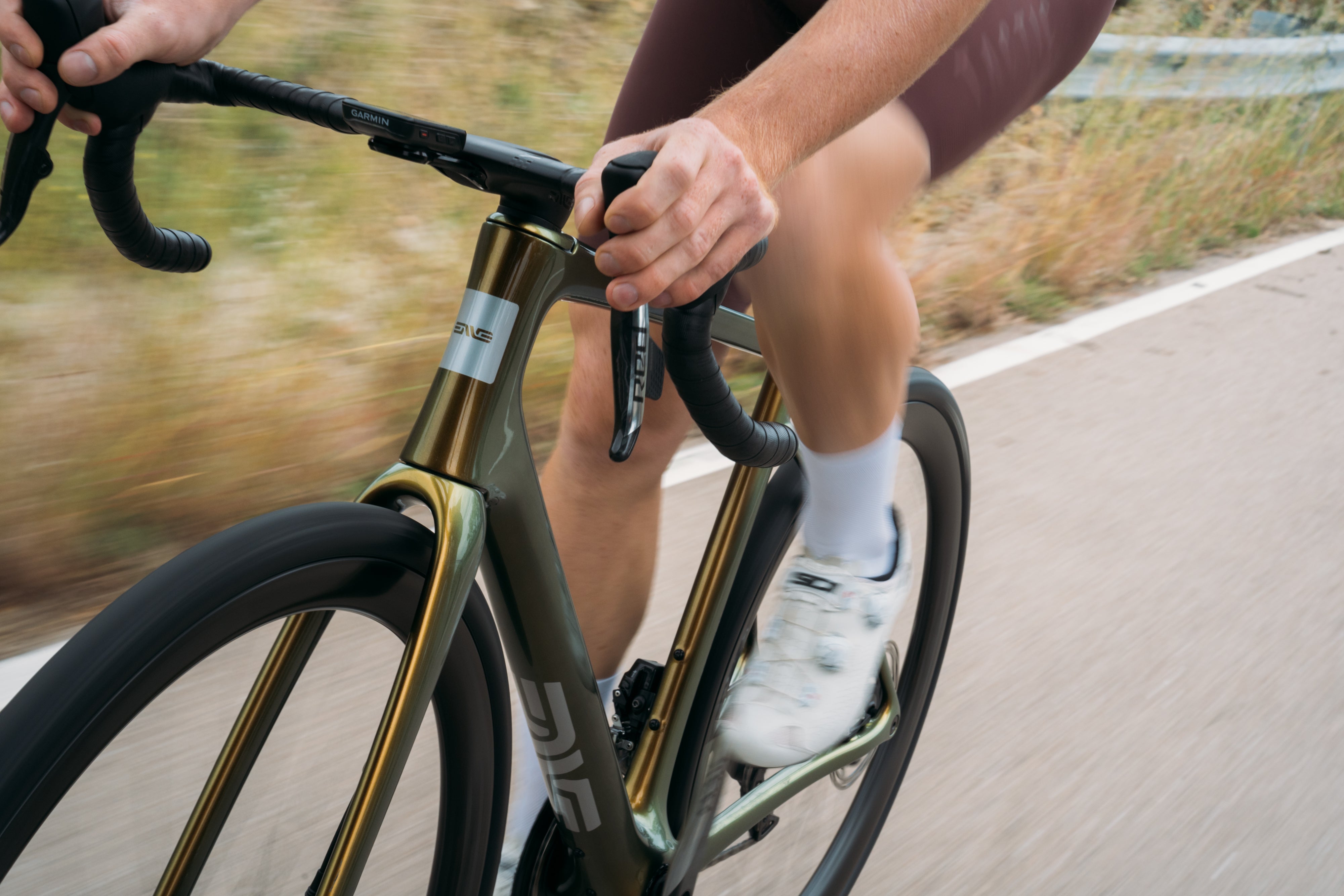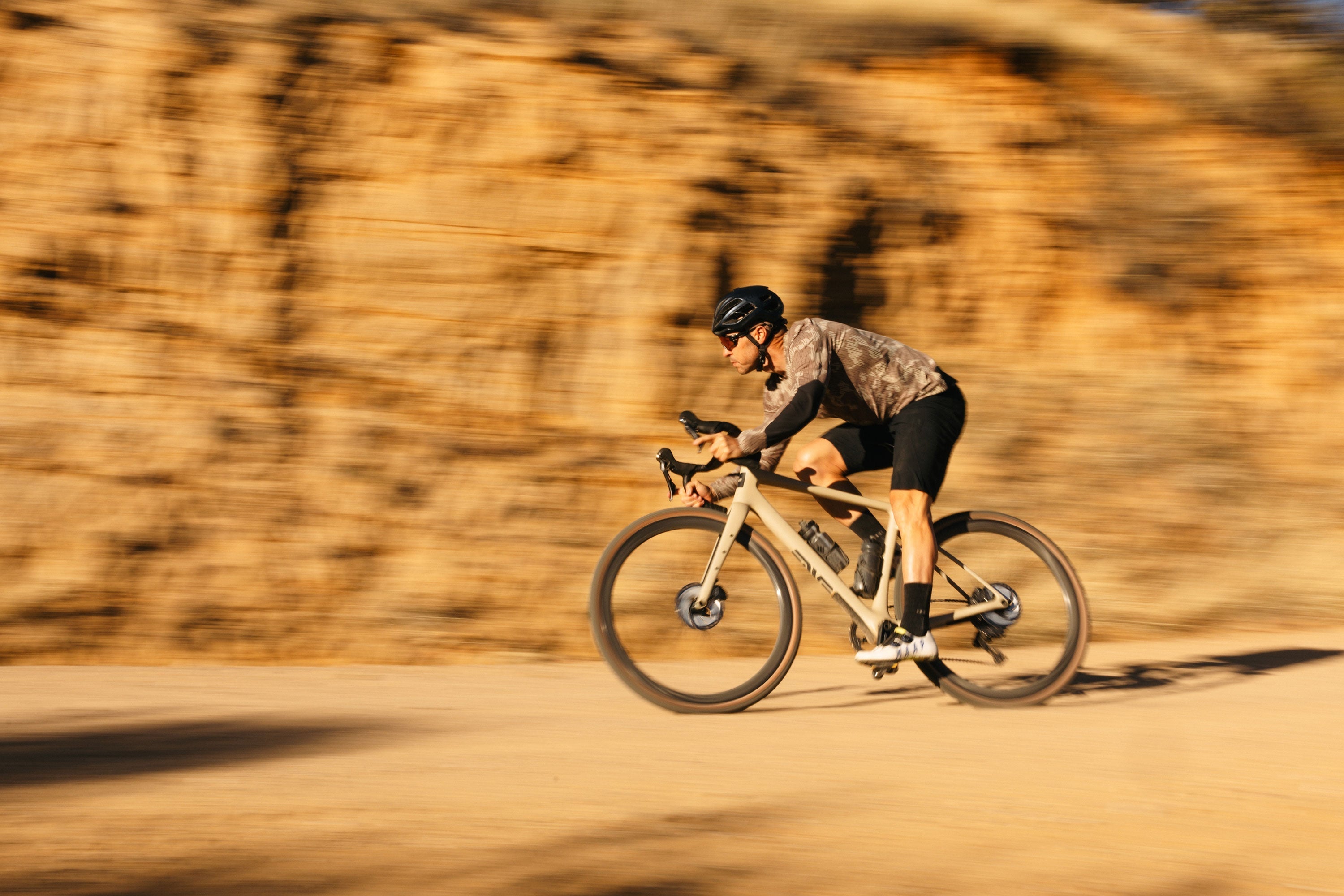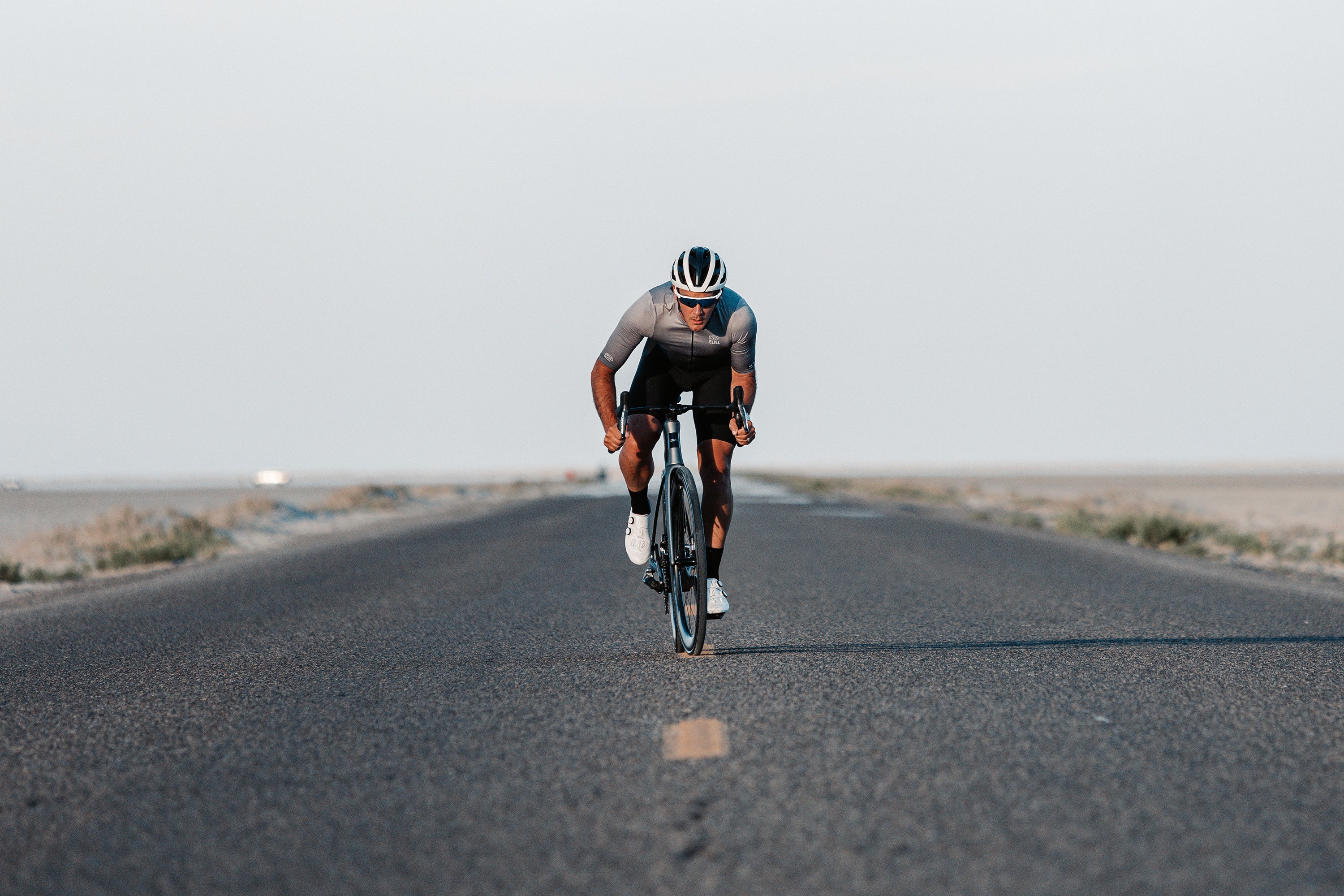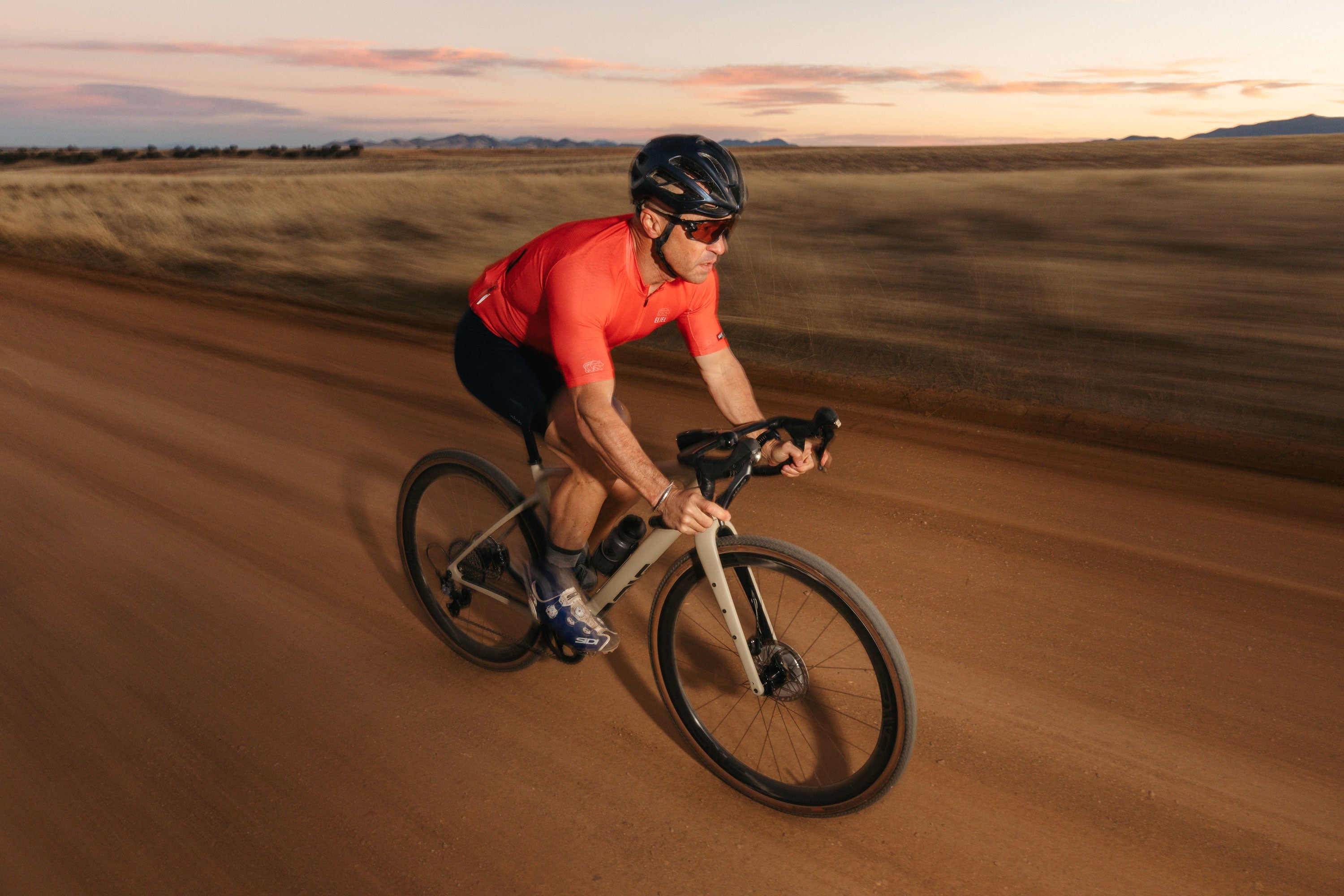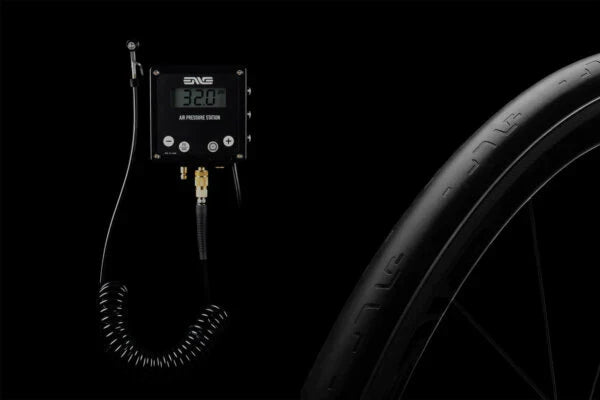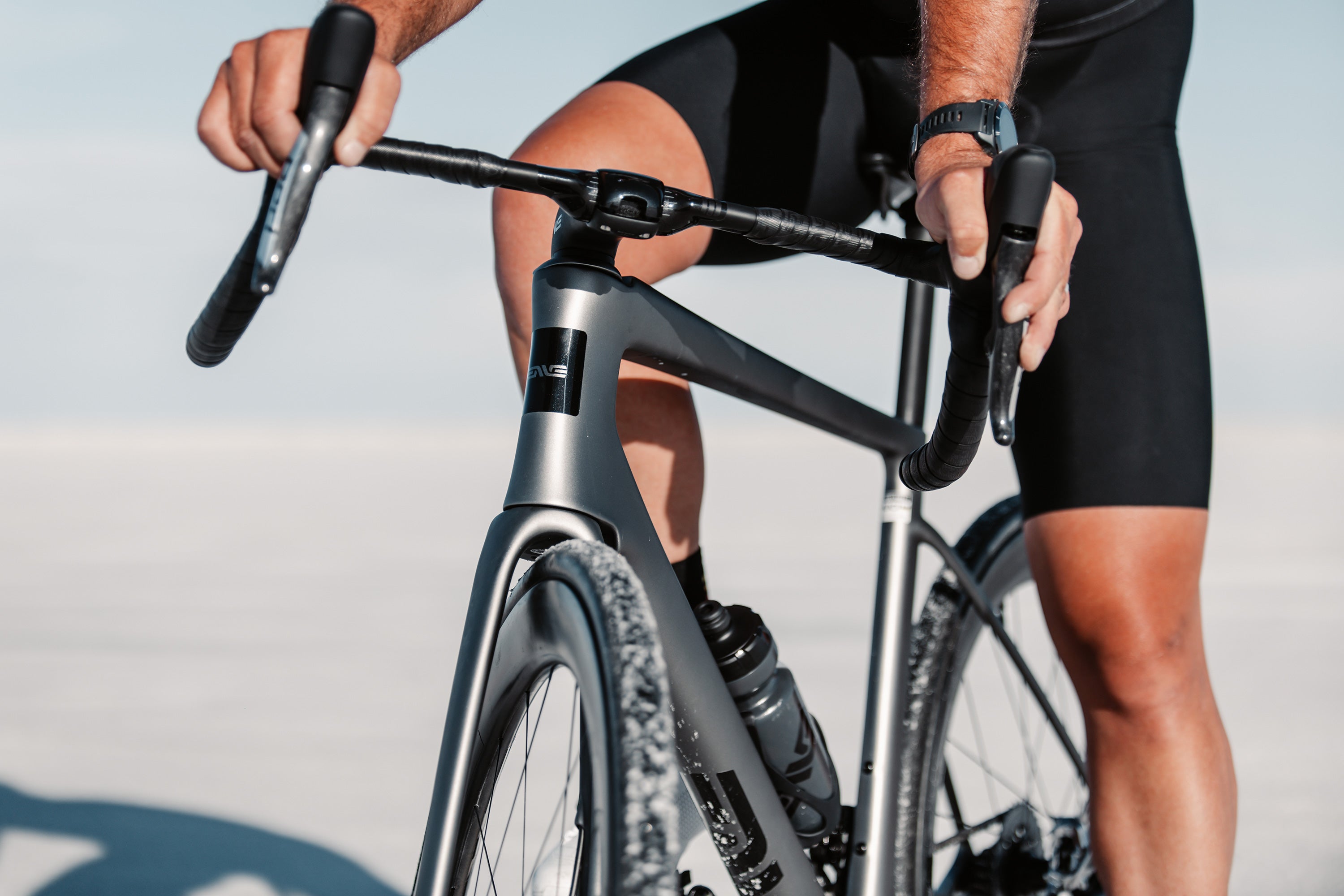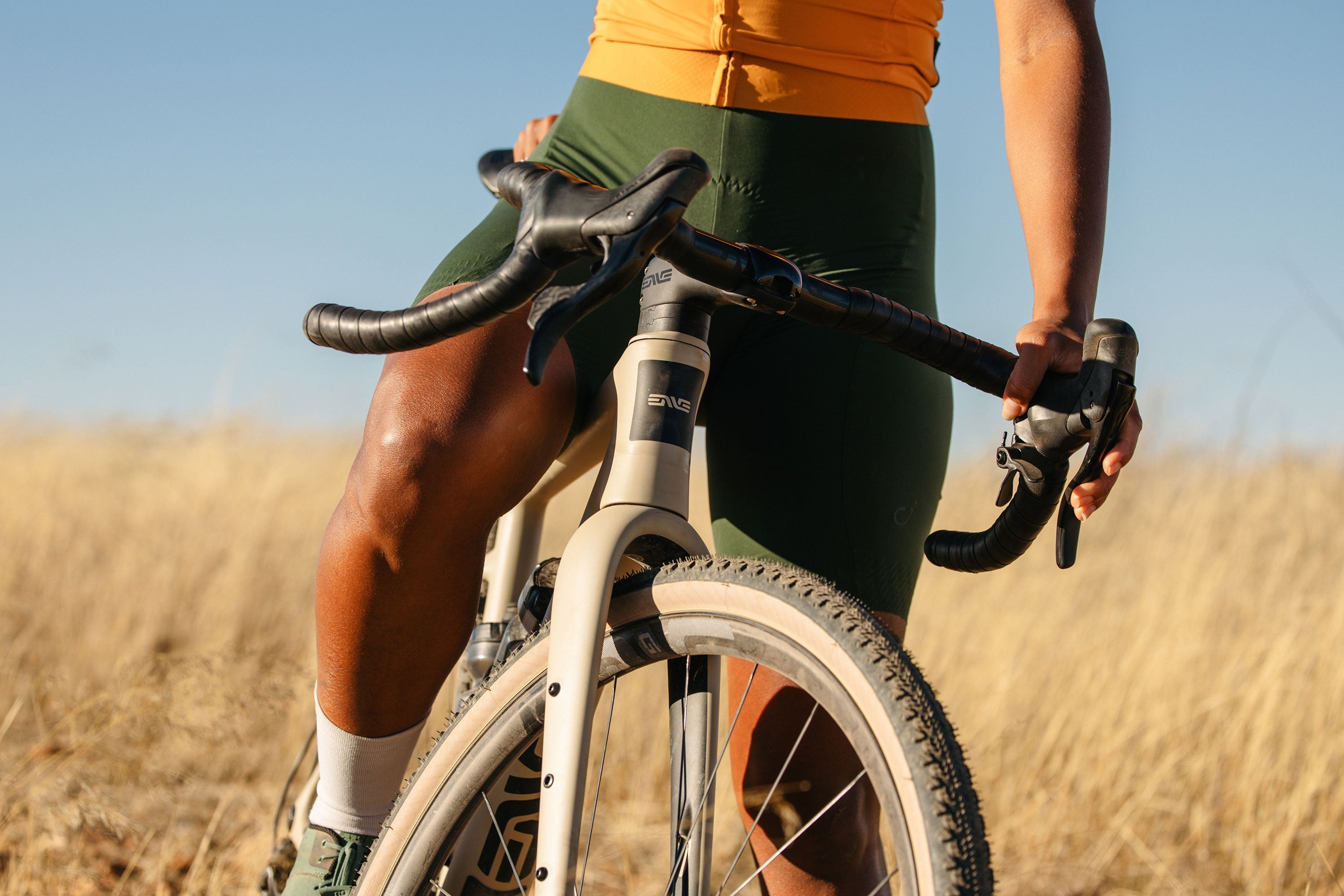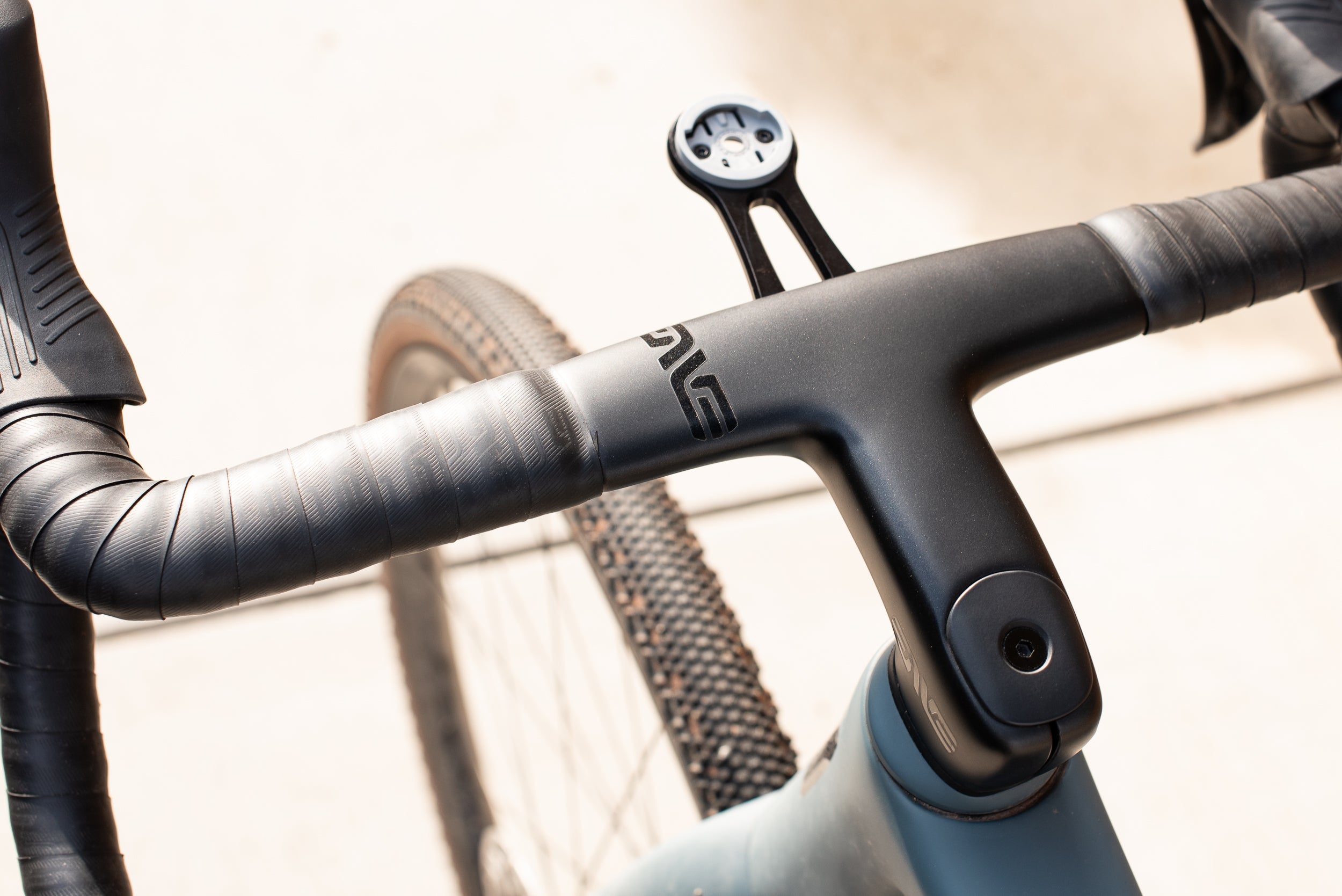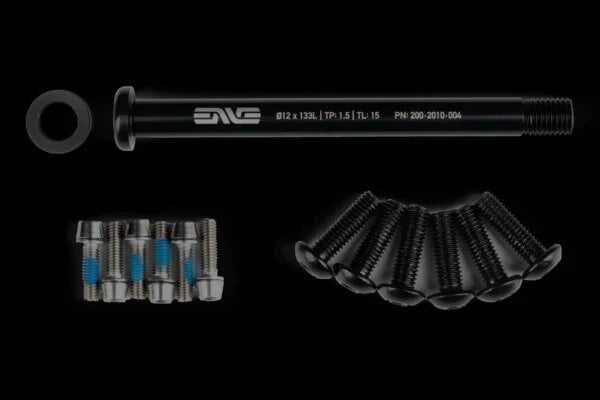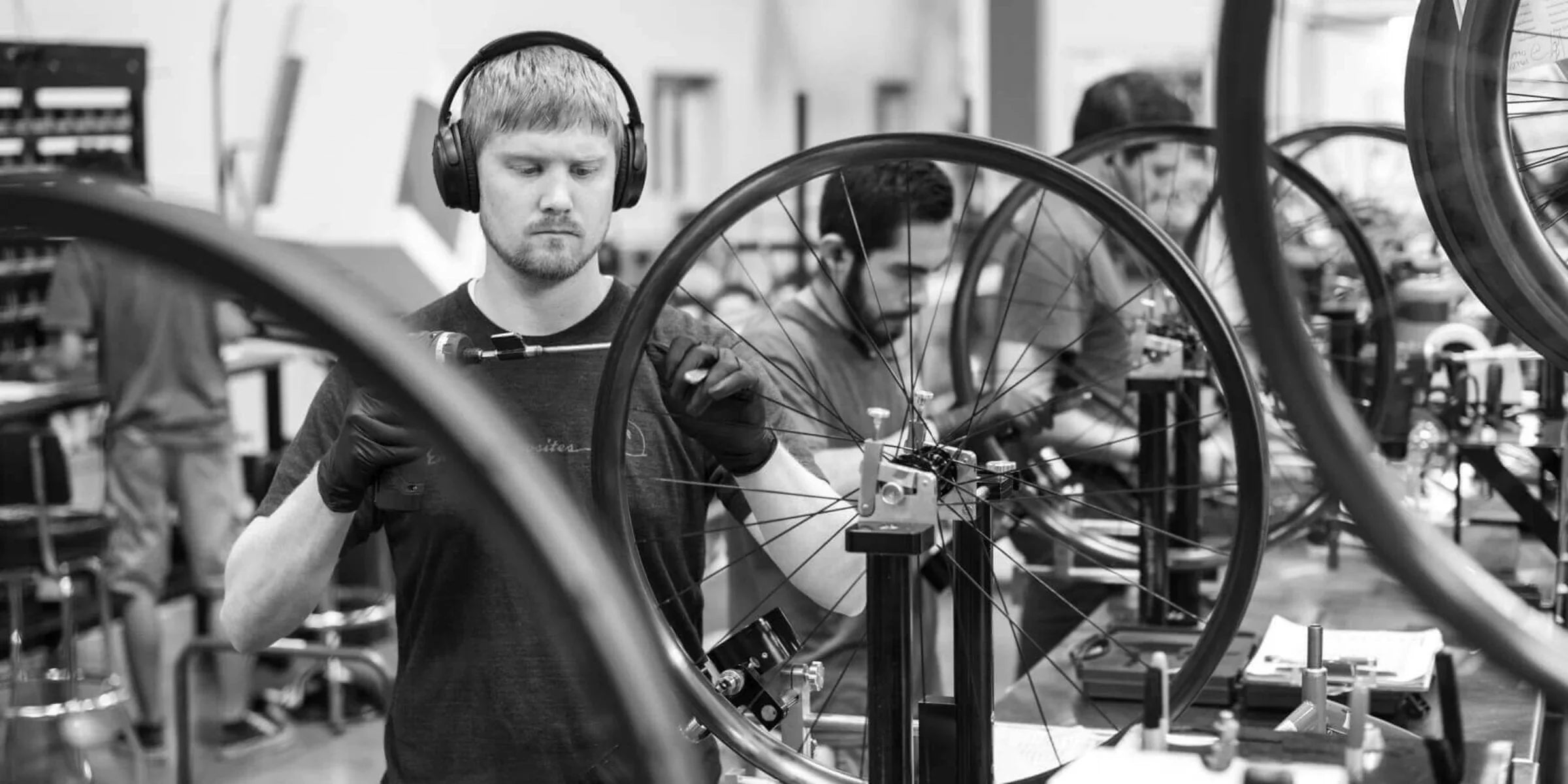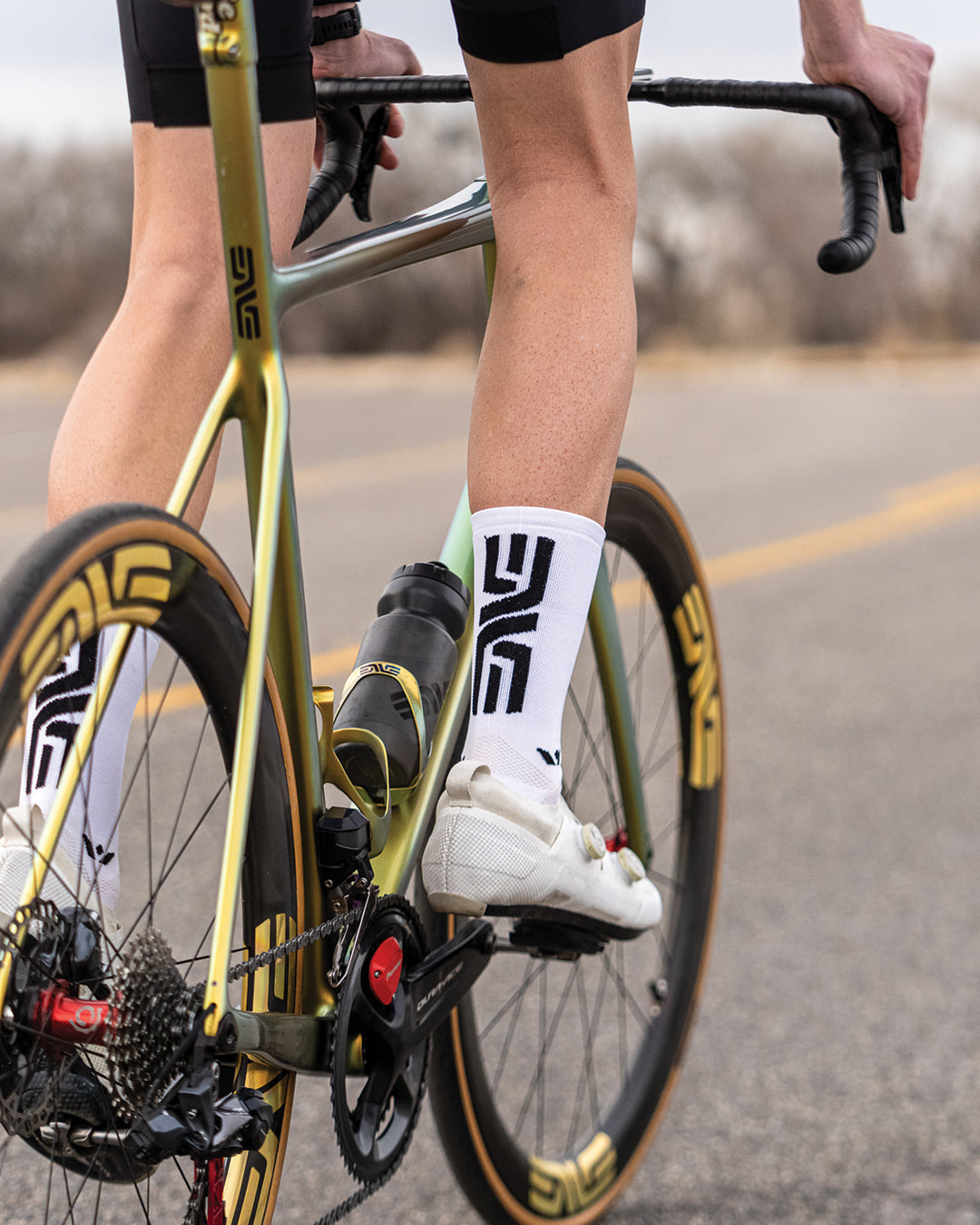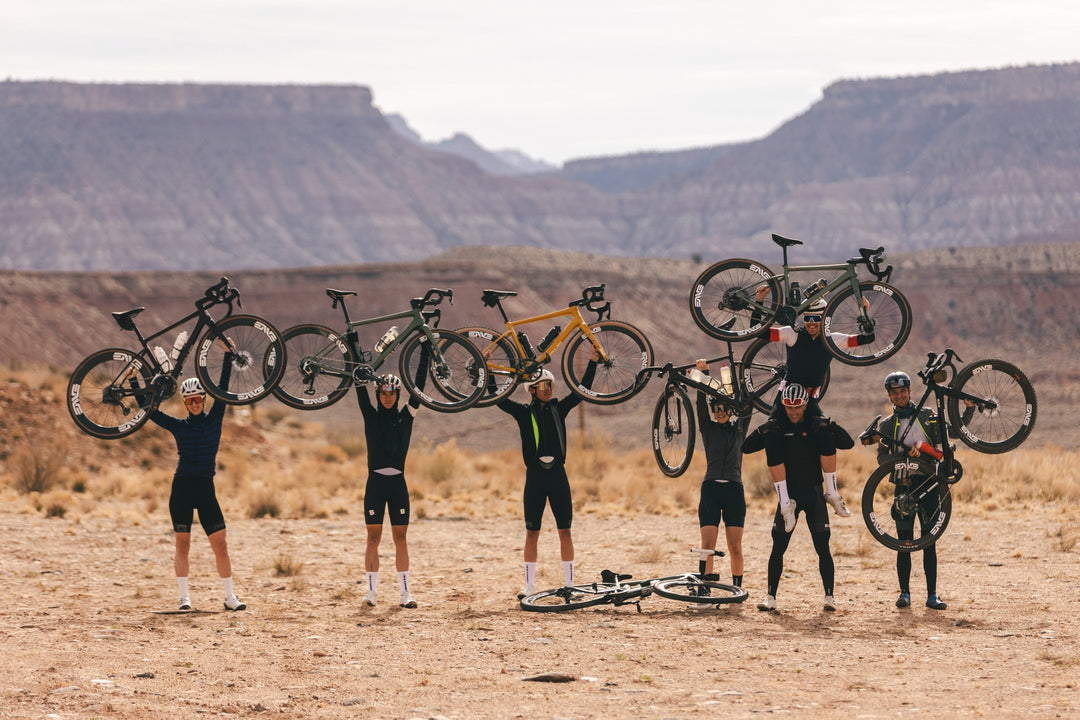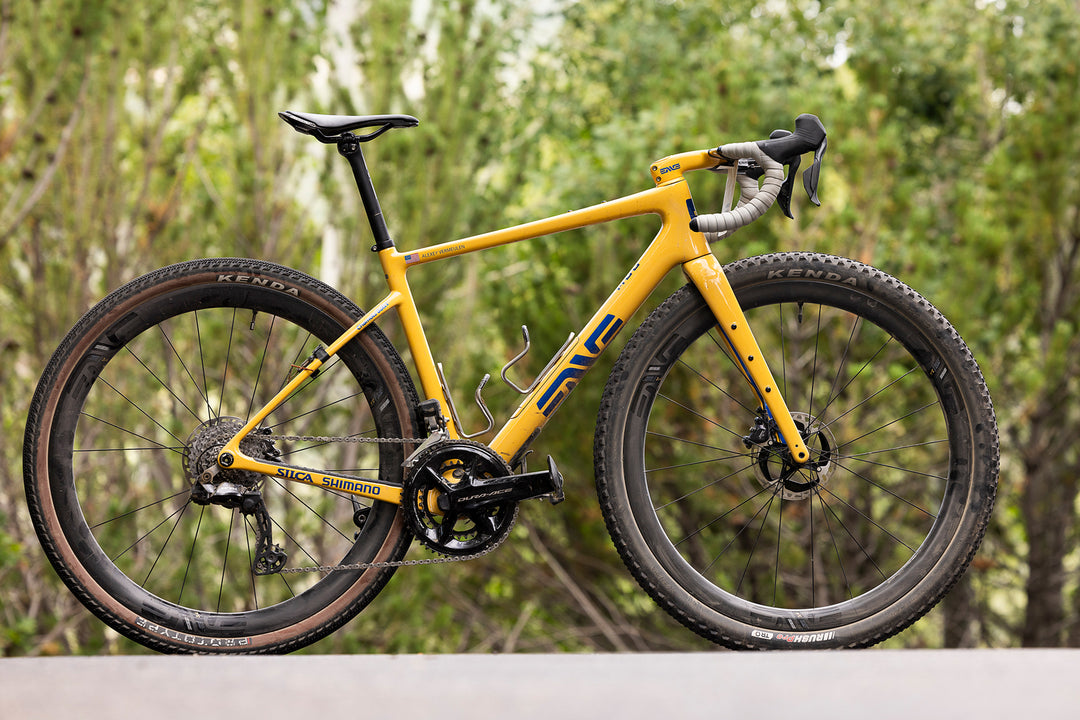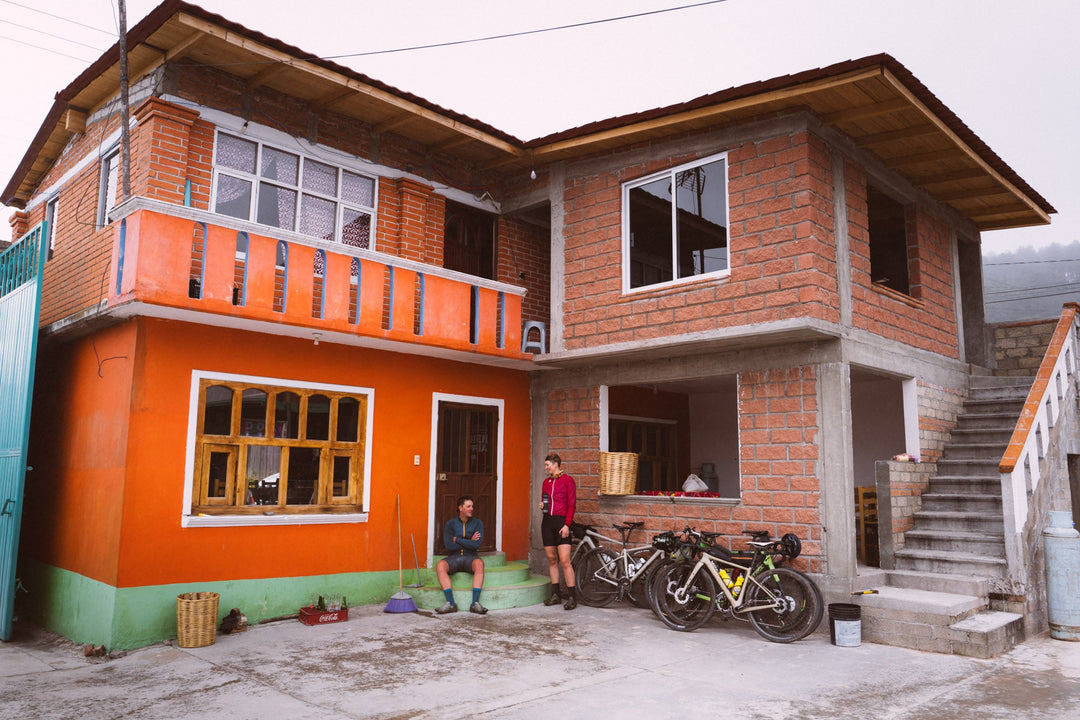Builder Profile: Firefly Bicycles
In the second of our new series profiling the talented builders with whom ENVE works, we meet Firefly Bicycles, from Boston, USA, a vastly experienced quartet of a titanium persuasion.
Custom frame builders are a passionate bunch, as they’ll all tell you, and it’s hard to imagine doing such a job without that unblinking enthusiasm. So, if you want to get to know a builder, hearing that they’re passionate about bikes isn’t enough. You need to drill down and find the focal point, where passion becomes true love. For Firefly Bicycles, it’s titanium.
“We love titanium,” Firefly’s Kevin Wolfson tells us. “We love its ride quality, light weight, and durability. We love that you don’t have to paint it; we love doing these custom finishes that stay true to the material and highlight what’s possible with raw titanium.” Indeed, a Firefly finished with the full complement of brushed, blasted, and polished surfaces – plus the brand’s unique, dye-free anodised graphics which bring out the metal’s oily hues – wears its molecular make-up proudly. This is maximum titanium.



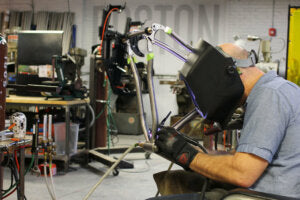
“THERE’S NO QUESTION THAT WE CAN DELIVER PERFORMANCE LEVELS TO MATCH HIGH-END CARBON BIKES”
Much more than aesthetics, it’s the possibilities of titanium that mean the most to Kevin, and to his fellow founders Tyler Evans and Jamie Medeiros, and to finisher Ellen Bechtel. At this point, you might be thinking you know titanium, that it’s light, springy, maybe a little down on stiffness but paying back with comfort; in short, that it’s a niche material. But this is a metal with a wingspan that can wrap right round the cycling world, as Kevin explains:
“Titanium offers the greatest versatility of any material. There are many different tubing dimensions that we can take advantage of, and it’s a relatively easy material for us to manipulate and machine. We can take a pretty raw set of tubing and customize it to each individual rider’s needs.
“For a long time, titanium had a reputation for making bikes that were very comfortable but not necessarily the highest performing. The reason for that reputation is really simple. When companies first started making titanium frames, they were using tubing dimensions similar to steel. Ti is a softer metal than steel, so those frames ended up being fairly flexy. Now, the tubing that we use varies a huge amount in external diameter, butt profile, wall thicknesses, shaping, and each tube in the frame is customized. If someone wants a fast, aggressive race bike that’s as stiff as their carbon Specialized, we can build that. Or if someone wants a frame for touring and they’re tired of bikes that are overly stiff, we can accommodate that. We can build bikes for people who are 90lbs or 250lbs and everywhere in between. There’s no question that we can deliver performance levels to match high-end carbon bikes. Knowing exactly what dimensions to use for the tubing comes down to experience.”





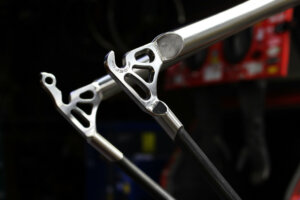

Ah yes, experience, the gold bullion of consumer trust currencies in these days of feedback score fairy dust. Prior to establishing Firefly Cycles in 2011, Kevin, Jamie, and Tyler all previously worked for Independent Fabrications – for 2, 12, and 13 years respectively – and Tyler had welded for Merlin Metalworks before that, so they have nearly half a century of titanium bike building behind them. That’s important, because this metal is notoriously hard to work with.
“One of the best examples is that once a ti frame is welded and cooled, it’s extremely difficult to correct the alignment. With a steel frame you can be a little loose and then bend it into alignment. That’s not the case with titanium, so if Tyler finishes welding a ti frame and it isn’t perfectly aligned then there’s no fixing that. It means that when Jamie cuts and miters the tubing, and when Tyler welds the frame, they have to be extremely precise. So, yeah, it’s a difficult material but once you understand how to work with it like we do…” It’s worth the effort? “Exactly. It’s a metal that Jamie enjoys cutting and bending, and that Tyler enjoys welding.”
“IT WAS A HECK OF A TEST FOR OUR FIRST BIKE. THE FRAME WAS PRETTY MUCH STILL WARM AS WE WERE BUILDING IT, BUT THEN FOR THE RIDE IT WAS 20 DEGREES AND THERE WAS SNOW ON THE GROUND”
The three friends decided to leave Independent Fabrications and set up Firefly together at the start of 2011. The motivation was straightforward, explains Kevin: “The goal was to build the types of bikes that we wanted to build, in the way we wanted to build them. For us, that meant being a smaller company, making high-end, completely custom frames, always focusing really closely on understanding the needs of each customer. We started in a small shop in Hyde Park, Boston. Two years later we moved into a much bigger space that allows us to do fittings in our shop, and we have a little gallery where we can host events.”
What was the first bike that the fledgling Firefly made in that small shop?
“That’s kind of a fun story. It was a stainless steel road bike that we made for me. We started the business in January 2011, planning to launch in March or April, and we really wanted to hit that deadline. We didn’t have any outside money so we were living on savings. At the time I was also involved with a fund-raising ride for an organisation called People For Bikes, a national bike advocacy group. That year they were launching five-day rides from city to city, including one from Boston to Washington DC, to raise awareness. It was started by Tim Johnson, a now retired former pro, a New England guy who I knew from my earlier days in racing. We finished the bike just barely on time, on a Tuesday night. We built it up in the middle of the night and then Wednesday morning I set off on it. The very first ride on it was over 100 miles from Boston to Connecticut, and then another 400 or so miles to get to DC, so it was a heck of a test for our first bike. The frame was pretty much still warm as we were building it, but then for the ride it was 20 degrees and there was snow on the ground. It was tough conditions but a fun way to introduce ourselves to the world.”
The team wasted no time in growing their offering to different types of bike and they set few boundaries for their brand. “In terms of geometry, usage and aesthetics, there are very few constraints,” says Kevin. “Really, all we’re looking for is to be sure that we and the customer are on the same page and that we deliver. Any constraints are usually due to components. A few people have asked for a pinion gearbox but we don’t offer that at the moment.”




“THERE ARE A LOT OF WAYS WE CAN INNOVATE, TOO. WE DEVELOPED OUR OWN IN-HOUSE TUBE BUTTING TECHNOLOGY. IN ALMOST EVERY FRAME THAT WE MAKE, ALL OF THE MAIN TUBING IS CUSTOM-BUTTED FOR THE INDIVIDUAL RIDER”
Although stainless steel didn’t stay on the menu for long, Firefly isn’t blinkered to other materials. In fact, even before the company had been formed, the three friends were mulling on an idea for a hybrid titanium-carbon frame that would capitalize on its construction to deliver a highly customized ride thanks to bespoke carbon fiber tubes made to spec by ENVE.
“There is something really magic about combining those two materials. When it’s done correctly you get the best of both in terms of ride quality, weight, durability, and also aesthetics; it’s really striking. It was always something we wanted to do. When we were established we started working with ENVE to think about what tubing we could use and how we could make it different from and a significant improvement on what other companies had done in the past.”
It can be easy to assume that bespoke builders are able to sidestep out of the technological arms race in which the mainstream brands are locked – not for the artisans the frantic iterating in search of a headline-worthy gram saving – but they still exist in the same world and, to an extent, are beholden to an agenda set by the giants. Like mice scurrying between the feet of elephants, builders such as Firefly must turn their diminution to their advantage as they keep pace with the industry’s stream of new standards through sheer agility.
“Because we’re a small company, we’re very flexible,” says Kevin. “Tires for road, gravel, and all-road bikes are getting wider faster than big companies can respond with two- or three-year model cycles, but we can react very quickly.
“There are a lot of ways we can innovate, too. We developed our own in-house tube butting technology which was a big step forward for us. Before that we’d been using a mix of stock butted tubing and thin-walled, straight-gauge tubing. Now we have a CNC lathe dedicated to butting tubing. In almost every frame that we make, all of the main tubing is custom-butted for the individual rider. It gives us far more scope to customize the ride quality. Our current project is working on a new technology that would add even more tire clearance but with shorter chainstays.
“We like the term ‘all-road’ because of the versatility it implies. We’ve built a lot of that type of bike for a range of people, from those who simply want a more comfortable road bike to those who want a bike to tackle really specific races such as Dirty Kanza, or something like that, with really extreme conditions. We use ENVE forks in almost every build and we really love the Road Disc Brake Fork. The tire clearance, the brake hose routing, and caliper mounting are all really well thought out, so it makes for extremely versatile road bikes. I’d say that level of tire clearance, that fork, and a frame that’s built to match it, have created a whole new category of road bike.”
While a handful of customers choose to have their Fireflys painted, most embrace the material in its natural state with either a brushed, bead blasted, or polished finish, or a combination of those. Unique to Firefly, and increasingly a signature aesthetic, are the innovative anodised graphics, created using a thin clear oxide in varying thicknesses to bring out the colours of the metal. “It looks like oil on water,” says Kevin. “It’s very thin, vibrant in a unique way, and extremely durable.”
When the builds look this good – “Every bike is a show bike,” says Kevin – it’s no wonder Firefly has an irresistible Flickr compulsion. Every single bike gets photographed, not only in a studio upon completion but also during the build. Owners are presented with a photobook when they collect their bike which, when you think about what a special purchase such a bike represents and how long it’s likely to be kept, is no more than appropriate. In fact, to do otherwise would be like not getting wedding photos. We’d even speculate that many of these relationships last longer. A Firefly, bespoke to you in every regard, is the very definition of a keeper.












